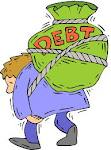 RRSP Rules
RRSP Rules
1. You can contribute to your RRSPs until the end of the year you turn 71 as long as you have earned income. After 71 you have 3 options:
- Take the cash and pay taxes
- Buy a life annuity (Money goes to life insurance)
- Move RRSP to Registered Retired Income Fund (RRIF) but you have a minimum annual withdraw and this money is taxable
Best to choose: Tax Free Savings Account (TFSA)
Yet, negative for older Canadian taxpayers
2. You can contribute up to 18% of previous year’s earned income
3. Pay attention to your carry-forward
4. You may deduct the full amount of your RRSP from your income
5. You can invest your RRSP money
Contact Rumanek & Company Ltd. for more information on bankruptcy and debt solutions. Or please fill out the free bankruptcy evaluation form. To learn more please visit our YouTube Channel. Rumanek & Company have been helping individuals and families overcome debt for more than 25 years.


 RRSP Rules
RRSP Rules
 The Boomers
The Boomers Do Not Take Debt Into Retirement
Do Not Take Debt Into Retirement